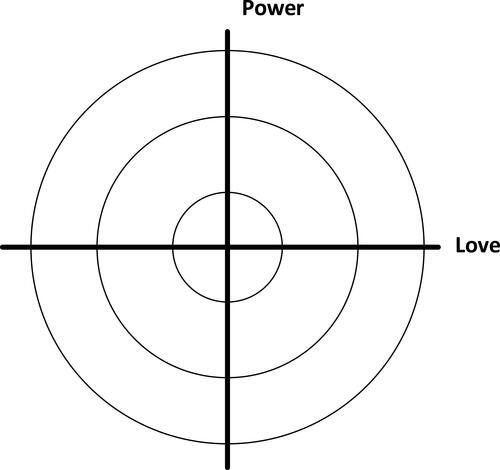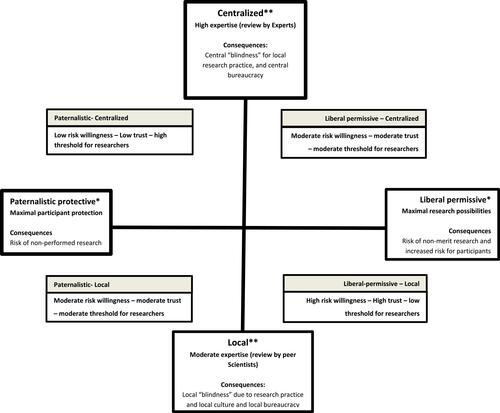Figures & data
Figure 1 A sketch of the interpersonal circumplex model, also known as Leary’s Rose, with the two original main axes; “power” and “love”.

Figure 2 The framework of organization of ethical review in health professions education research. The two axis with its extremes being, paternalistic protective versus liberal permissive on the protectiveness axis (*), and central versus local/decentralized on the organization and responsibility axis (**). A position high on this organization and responsibility axis encompasses centralized high expertise and review by experts. This is as opposed to low on this organizational responsibility axis, encompassing review by local peer scientists with associated moderate expertise. On the protectiveness axis, a position left on this axis encompasses an attitude of maximal participant protection (at all costs) as opposed to a position on the right of this axis which encompasses a liberal and permissive viewpoint, with maximal research possibilities. Consequences include central “blindness” for research practice and a central bureaucracy for a position high on the organization and responsibility axis. As opposed to a consequential local blindness and local bureaucracy for a position low on the organization and responsibility axis. In the quadrants the core characteristics (the levels of risk willingness, trust and the threshold for researchers) and consequences (per axis) are depicted.

